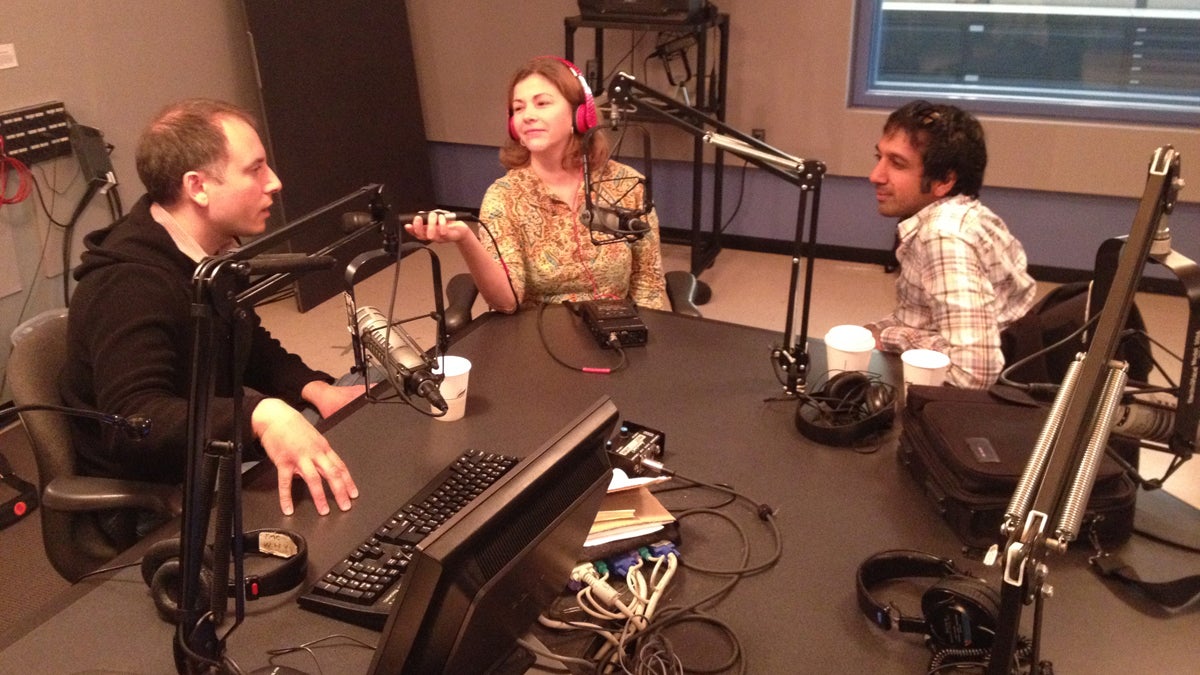Taking CO2 out of the atmosphere to make plastics
Listen
Matt Skoufalos (left), a writer, journalist and musician from New Jersey, talks with Rob Kulathinal, an evolutionary biologist and geneticist from Temple University.
What if you could take carbon dioxide out of our atmosphere, and actually use it to make stuff? We meet one professor who is trying to do just that.
What if you could take Carbon dioxide out of our atmosphere, and actually use it to make stuff? In our regular segment “So – What do you do” where lay people interview scientists about their work – we meet Peter Graham, a St. Joseph’s chemistry professor who is trying to do just that. He was interviewed by third-year UPenn dental school student Yesle Kim, who started off by asking… “So, what do you do?”
“I work in a field we call carbon dioxide activation. That activation part has to do with making CO2 do reactions it wouldn’t normally do,” explained Graham. He elaborated that plants do this kind of process every day. “All the carbon in the trees started as carbon dioxide, and using photosynthesis, the tree converts the CO2 to make energy, but it also gets all these other molecules that are useful, the sugars, and it eventually makes the walls of the tree, the leaves.” Graham added that humans can’t really do chemistry like that, so all of the carbon used to make plastics or pharmaceuticals comes from petroleum and natural gas. “Our field is looking at alternatives to these carbon sources to make chemicals.”
Kim then asked where he would get the carbon dioxide to make these chemicals.
“We would be trying to use atmospheric CO2,” answered Graham. “CO2 is really stable; that’s why we have too much of it. It’s the product of combustion. One of the most stable forms of carbon, so we have to undo that, we have to use a catalyst,” he explained.
Graham and his team have found a few precatalysts that have been able to “bend” the CO2 and get the process started. The next step is to have the CO2 react with other molecules to create materials.
“The dream for the project would be that the plastics you encounter every day, would have been made using CO2,” said Graham. Not only would the process be an alternative to using fossil fuels, but “it would take carbon out of the atmosphere, and trap it in the plastics that you use to take your lunch to work,” said Graham.
Would you like to be part of our “So – what do you do?” segment – either as a scientist or an interviewer? Let us know us at thepulse@whyy.org.
WHYY is your source for fact-based, in-depth journalism and information. As a nonprofit organization, we rely on financial support from readers like you. Please give today.




